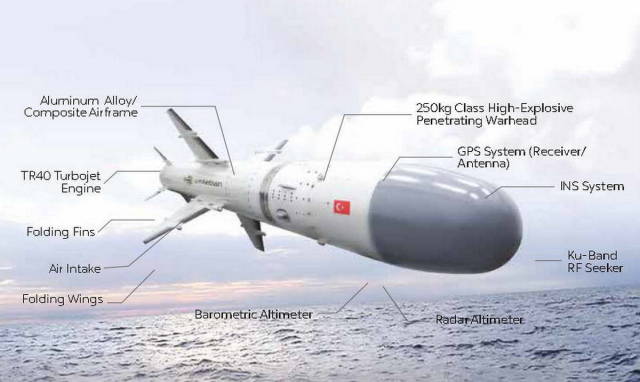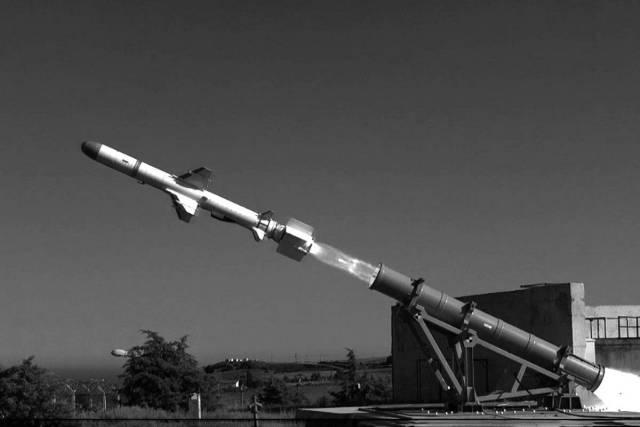The course taken by the Turkish leadership to develop the armed forces based on national resources is being successfully implemented in many areas. In the field of naval weapons, in accordance with the objectives of the project, the development of the Atmaka subsonic cruise missile system, a joint production of the Turkish companies Roketsan and Aselsan, is being consistently promoted.
The first tests of a new anti-ship missile (RCC) under the designation "Atmaka" (Atmaca) took place in 2016. At the same time, it was announced that the test launches were successful, and it is expected that the missile will enter service with the Turkish Navy within the next few years.
According to open sources, the Atmaka RCC is being developed as a means of defeating sea surface and ground targets and can be used by surface ships and coastal complexes. According to a number of expert assessments, based on its tactical and technical characteristics and analysis of the behavior of the munition during test launches, the Turkish development can be considered as a hybrid of the French Exocet RCC (MM40 Exocet) and the American Harpoon cruise missile (AGM-84 Harpoon).
RCC "Atmaka" has a diameter of 350 mm and a wingspan of 1.3 m. The length of the rocket, depending on the source, ranges from 4.8 (Roketsan website) to 6 m (other sources). With a total weight of 800 kg, the product is equipped with a high-explosive warhead weighing up to 250 kg. During the tests, the prototypes of the rocket reached a maximum flight range of 220 km.

Turkish PKR "Atmaka". The device of the rocket
The first modifications of the RCC were equipped with a Microturbo propulsion system. Currently, the rocket is equipped with a TR40 turbojet engine produced by the French company Safran. It is assumed that the RCC propulsion system provides it with a cruising speed between Mach 0.85-0.95. In addition, if the Teledyne CAEJ402-CA-400 Turbojet engine used in the Harpoon CR provides a thrust of 2.92 kN and has an operating time of 15 minutes, the TR40 turbojet engine installed in the Atmaka RCC develops a thrust of 2.5-3.4 kN and is active for 25 minutes. At the same time, it is reported about the organization of mass production of similar engines of Turkish development under the designation KALE-3500. It is very likely that the integration of the KALE-3500 power units into the product will occur at a stage close to the mass production of the rocket.
The Atmaka guidance system includes an inertial module operating in the middle section of the trajectory, and a GPS global positioning system unit that is connected as it approaches the target area. On the final part of the trajectory, the target is searched using an active radar homing head (ARGSN), manufactured by Aselsan. For use in prototype missiles, Aselsan supplied more than 20 Ku-band args (used for target firing tests) with a mechanical scanning antenna on a gimbal. In their manufacture, solid-state technology is used instead of Traveling Wave Tubes (TWT), which are installed in Harpoon missiles.
The operator of the combat post of the ship's missile system receives information from the Atmak RCC via a digital communication channel. To increase its security, it is planned to install a two-way encrypted communication unit (Atmaca Data Terminal, ADT), its development is carried out within the framework of the KEMENT project. In the future, the ADT module will complement the radio-electronic stuffing of the rocket.
According to the manufacturer, the Atmaka RCC can be used in all weather conditions, has a low effective scattering surface and the ability to plan a flight in three planes as part of a flight task. Direct attack of the target is carried out in one of three modes: horizontal flight (direct attack), dive (attack from above), and also the possibility of repeated attack is provided.
To be continued. Part II. Flight features and production plans
Based on the materials of the Defense Turkey magazine

